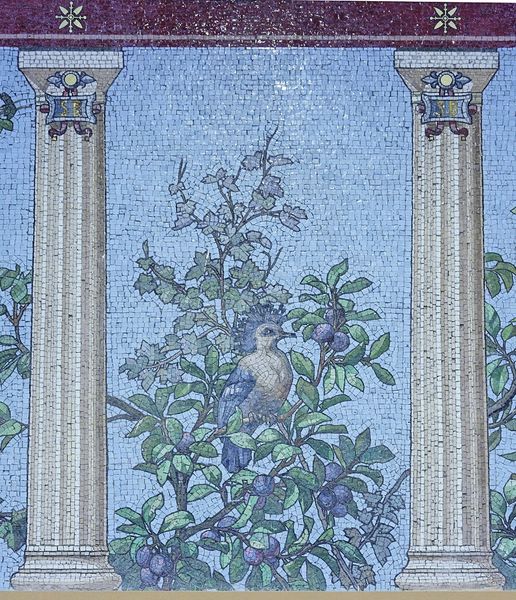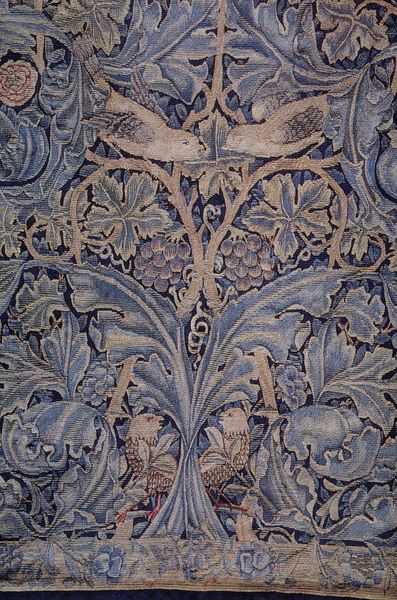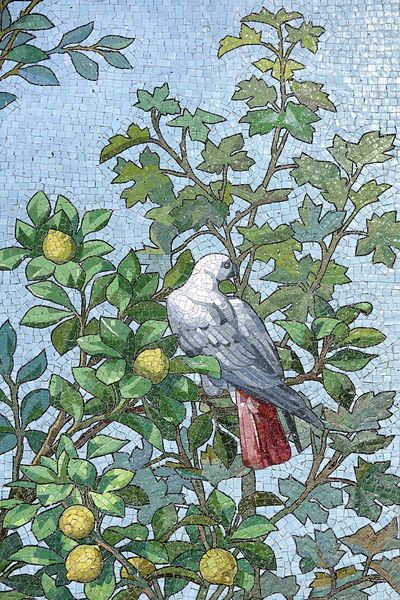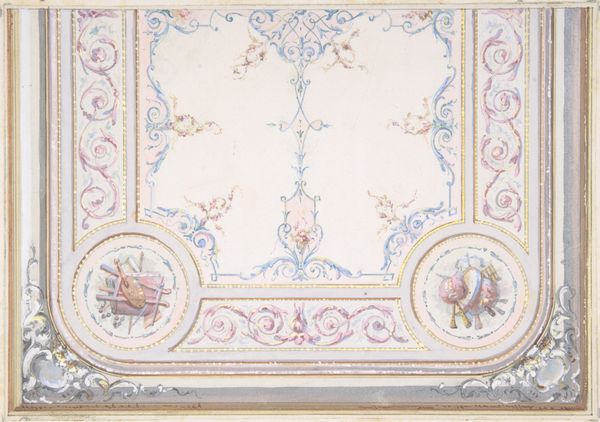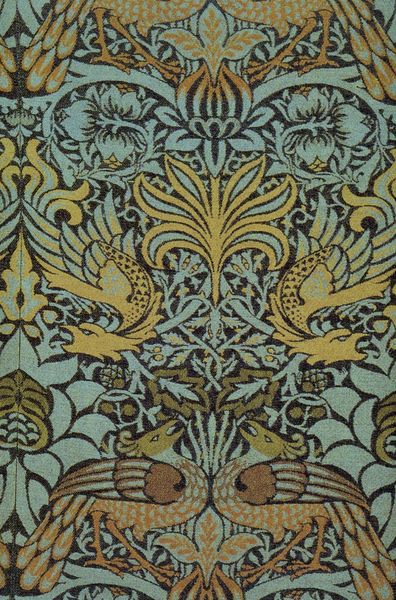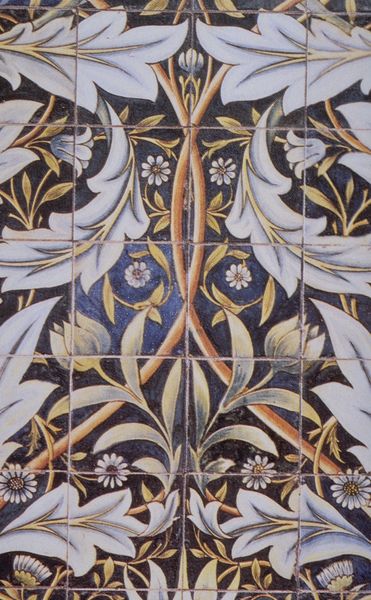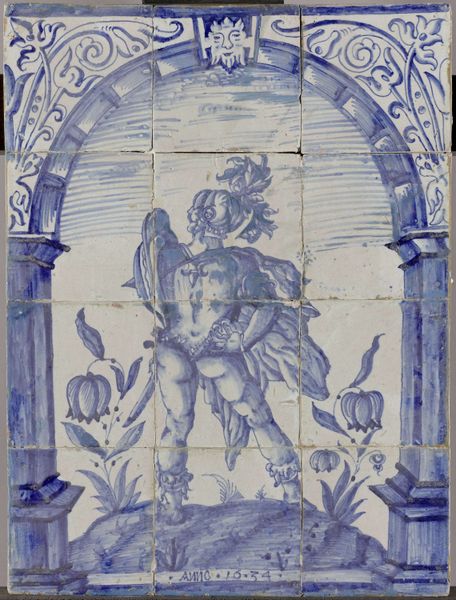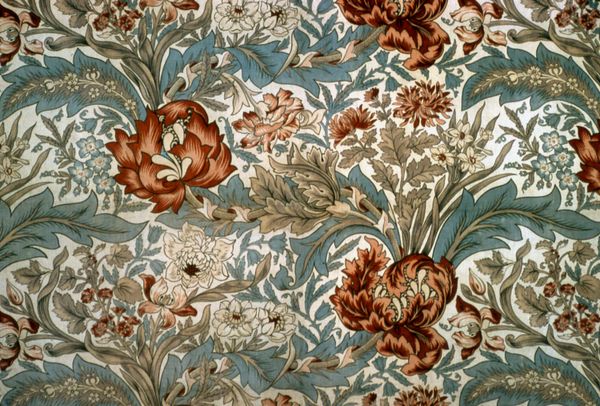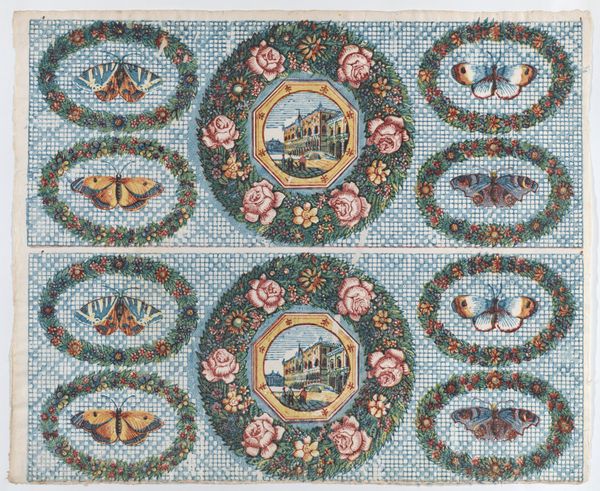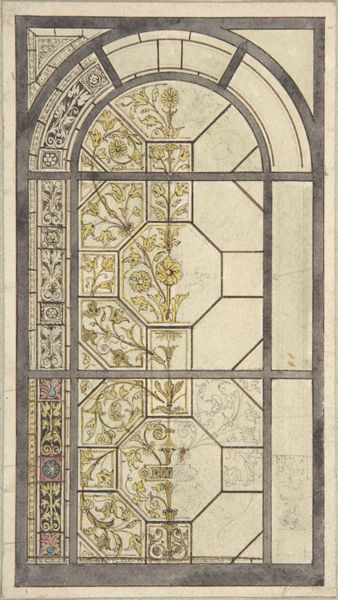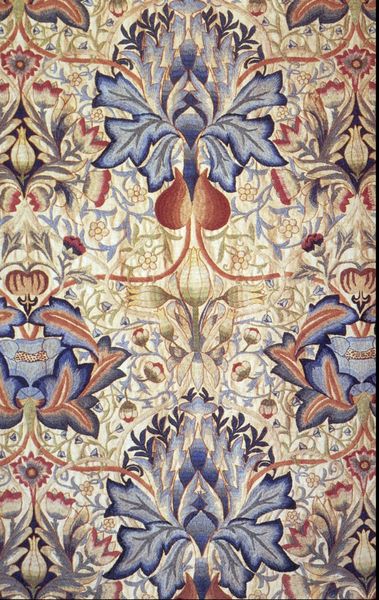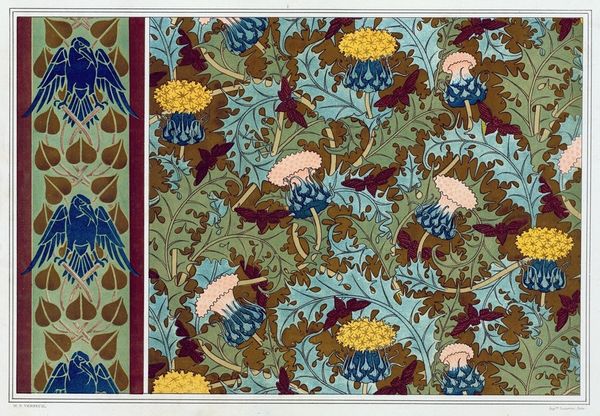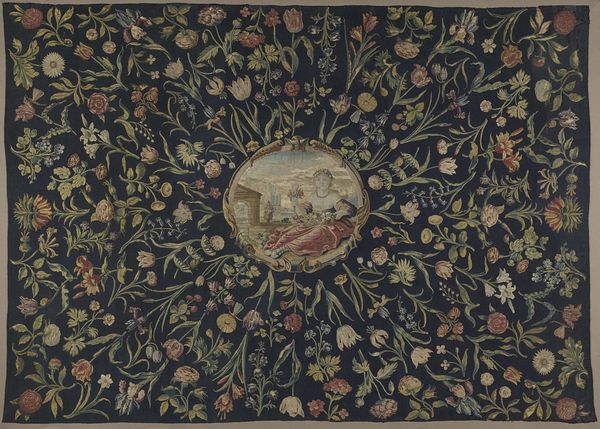
mosaic, ceramic
#
mosaic
#
natural stone pattern
#
byzantine-art
#
landscape
#
ceramic
#
figuration
#
traditional architecture
#
tile art
#
geometric
#
column
#
decorative-art
#
stained glass
Copyright: Public domain
Curator: Here we have a mosaic that was part of the dining hall room of the Sainte-Barbe Library in Paris, though the date and the mosaicist responsible, Giandomenico Facchina, are unknown. The medium is ceramic, featuring figuration with strong Byzantine and decorative art influences. What are your initial impressions? Editor: I'm struck by its serene formality. The composition—columns framing a garden scene—feels simultaneously inviting and meticulously ordered. It evokes a sense of timelessness. Curator: The technique involved must have been laborious. Consider the sheer number of tiles required to create the subtle shading in the columns, let alone the details in the foliage and the owl. It reflects an incredible dedication to craft, blurring the lines between "fine art" and applied arts meant for everyday utility. The skill involved, and the production process itself, tells us a lot about the value placed on ornamentation in this specific space, the Sainte-Barbe library. Editor: Absolutely, and beyond the craft, it's speaking to social constructs, too. Who has access to spaces adorned with this level of artistic detail? Consider the patronage system that allowed such elaborate designs. Also, this mosaic and others, were meant to inspire those dining there. What did this suggest about cultural biases or dominant ideas in the era? Curator: An interesting reading. This certainly asks questions about who has historically benefitted from the production and reception of works such as this. You could also look at the context for the time and question, whether the geometric nature of the overall design serves a specific structural or functional role within the Sainte-Barbe library. Were the materials locally sourced, and if not, what does that tell us about trade routes and global material networks in Paris? Editor: Fascinating questions, indeed. It reminds us that aesthetics and functionality are almost always tied to cultural ideas regarding purpose, and beauty. The decorative arts become documents and evidence of a worldview. Curator: Well, I'm certainly inspired to consider what this tile art says about those ideas! Editor: Me too. Thank you for highlighting such an overlooked part of design in this cultural space.
Comments
No comments
Be the first to comment and join the conversation on the ultimate creative platform.
